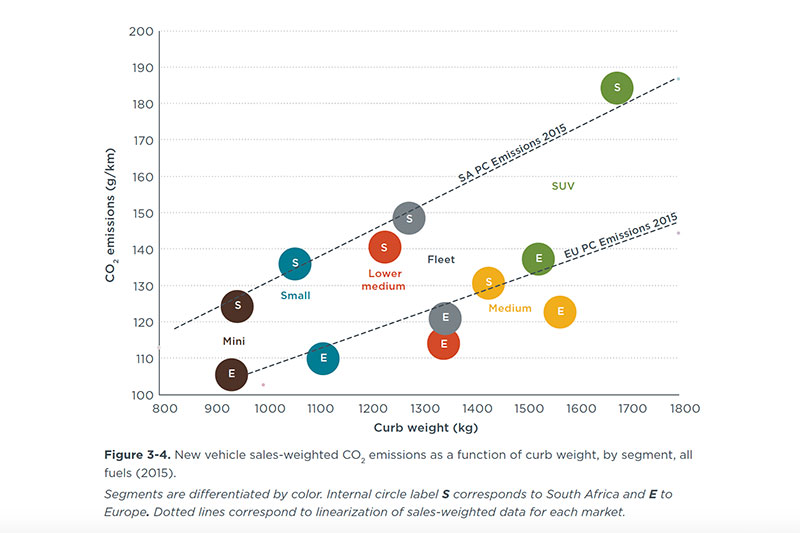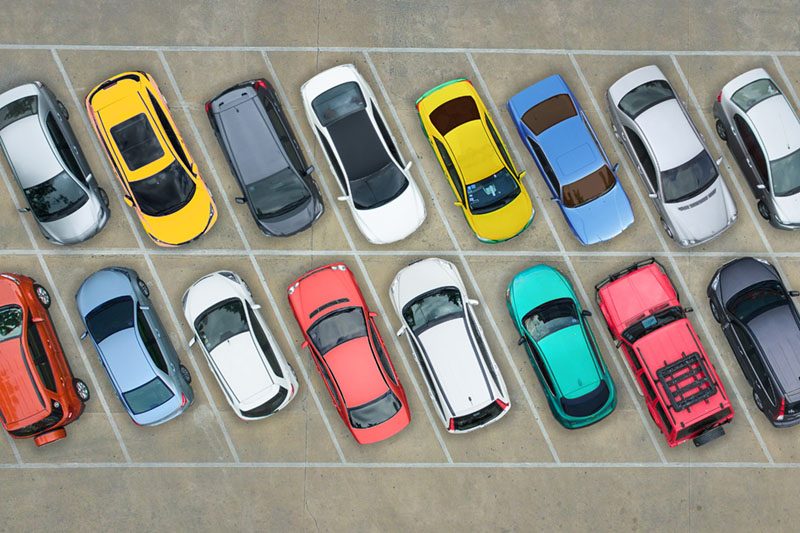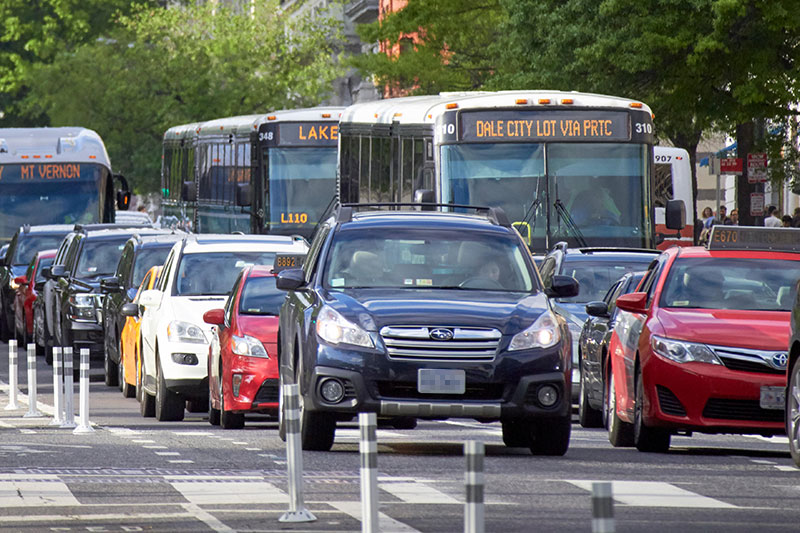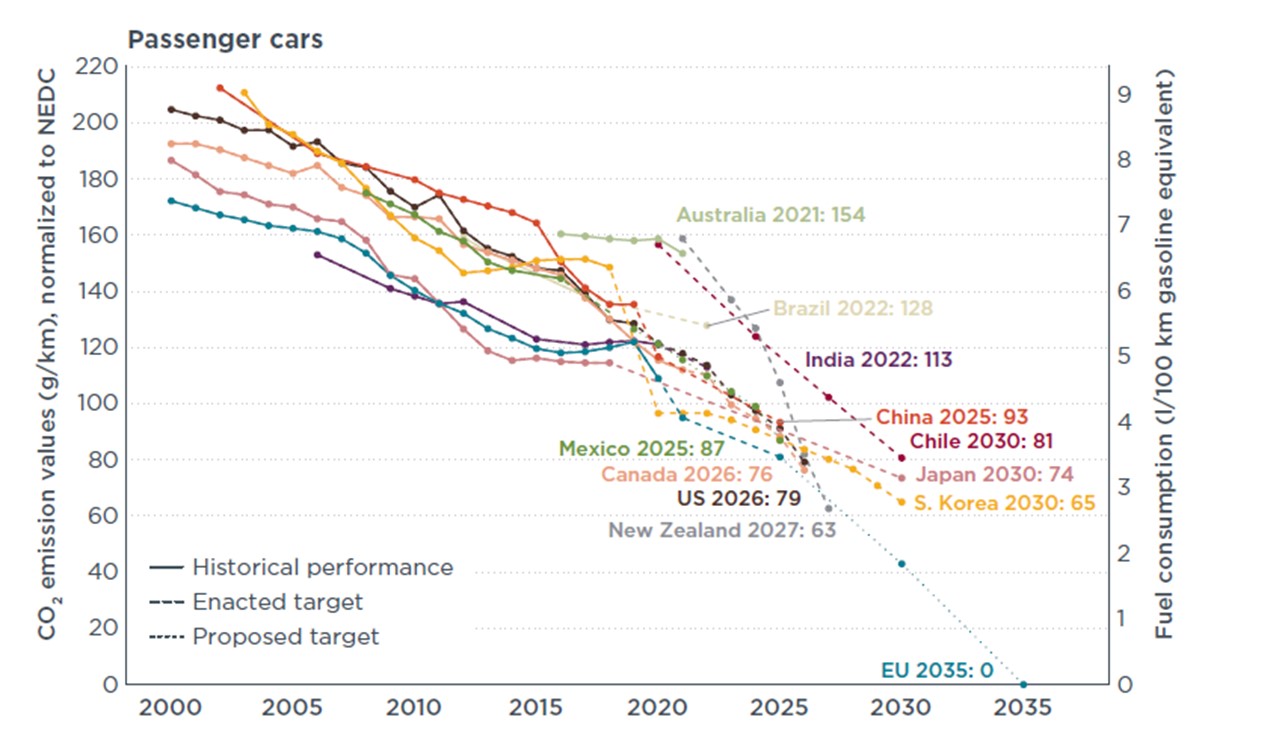South Africa: GFEI releases new assessment of fuel economy potential
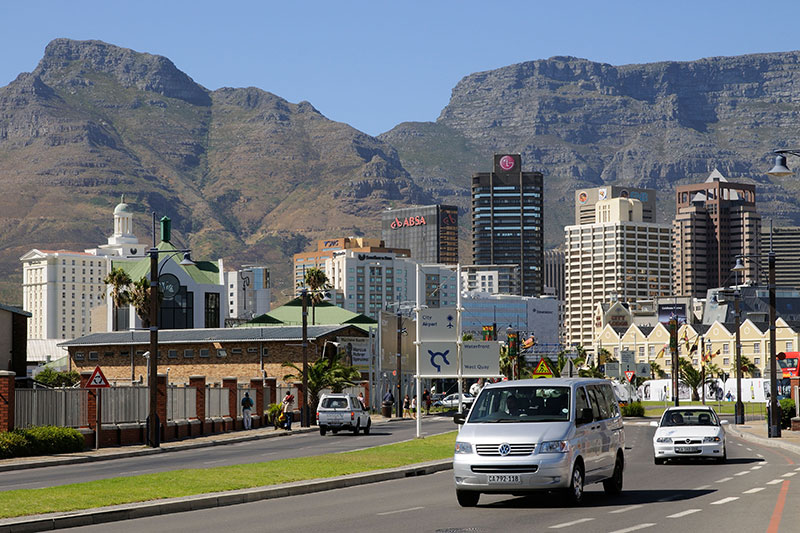
South Africa’s new passenger vehicle fleet is the largest on the African continent and the 18th largest globally. South African manufacturers sold more than 412,000 new vehicles in 2015, and exported more than 333,000 units in that year. Although domestic new vehicle sales have been impacted by economic and political instability in the last couple years, the sheer size of the young South African population and expected economic growth points to a projected growing fleet of private vehicles, with significant impacts in terms of CO2 emissions and fuel consumption.
A new report, led by GFEI partner the International Council on Clean Transportation (ICCT), provides a transparent assessment of the current new passenger vehicle market in South Africa in terms of CO2 emissions, and provides an evaluation of the benefits of adopting fuel economy and CO2 emission standards in those vehicles. It follows a series of workshops that ICCT have led in South Africa over the past couple of years. The report is intended to inform South African policymakers and domestic stakeholders, as well as an interested international audience, on the fuel savings that could be achieved with the adoption of said standards.
In 2015, the average CO2 emissions of new passenger cars in South Africa was 148 g CO2/km, tested under the NEDC test cycle. The equivalent metric in terms of fuel consumption is 6.3 litres/100 km. A comparison of South Africa’s passenger car fleet with the European fleet shows that, on average, the South African passenger vehicle emits 21% more CO2 than the average European passenger car, rated at 121 g CO2/km for the same year. This large difference is exacerbated by the fact that South Africa’s fleet is 5% lighter than the European fleet, indicating lower average efficiency of vehicles in South Africa. The lower efficiency of the average South African vehicle is also evident when comparing the fleets by segment, and is more pronounced for Sports Utility Vehicles (SUVs).
Adopting a fuel economy or CO2 emission standard for passenger vehicles in South Africa would result in significant sectorial CO2 emission reductions, reducing the impact of a projected future increase in passenger vehicle fleet size. Three different scenarios were studied:
- the baseline case where no emission standards are adopted,
- a short-term policy adoption scenario where the standard requires a 19% improvement by 2024, and
- a long-term scenario where the rate of improvement is maintained till 2030, resulting in a fleet improvement of 36%.
A model was developed to assess the impact of each scenario in terms of total CO2 contributions. The model shows significant benefits of adopting CO2 standards, even in the face of a larger fleet:
- adopting a 120g CO2/km standard by 2024 would result in an annual reduction of 4.5 million tons (Mt) CO2 by 2050;
- adopting the long-term target of 95 g CO2/km by 2030 would result in an annual reduction of 11.1 Mt CO2 by 2050.
These represent a 12% and 28% reduction with respect to the baseline scenario. The results show the large potential of fuel economy/CO2 emission standards to decarbonize the passenger vehicle market.
